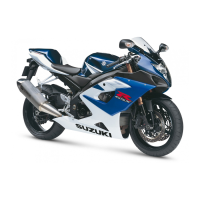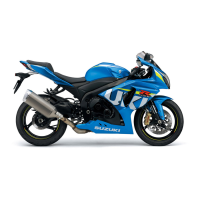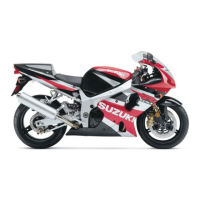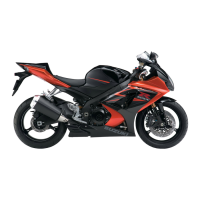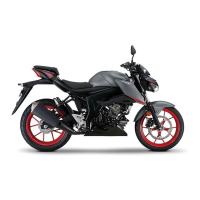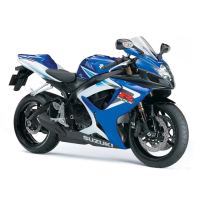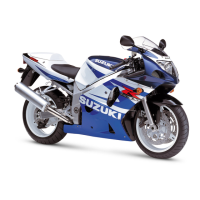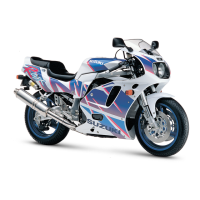2-26 PERIODIC MAINTENANCE
FRONT BRAKE (Caliper side)
• Fill the master cylinder reservoir to the top of the inspection
window. Replace the reservoir cap to prevent dirt from enter-
ing.
• Attach a hose to the air bleeder valve and insert the free end
of the hose into a receptacle.
• Squeeze and release the brake lever several times in rapid
succession and squeeze the lever fully without releasing it.
Loosen the air bleeder valve by turning it a quarter of a turn so
that the brake fluid runs into the receptacle. This will remove
the tension of the brake lever causing it to touch the handle-
bar grip. Then, close the air bleeder valve, pump and squeeze
the lever, and open the valve. Repeat this process until fluid
flowing into the receptacle no longer contains air bubbles.
NOTE:
While bleeding the brake system, replenish the brake fluid in the
reservoir as necessary. Make sure that there is always some
fluid visible in the reservoir.
• Close the air bleeder valve and disconnect the hose. Fill the
reservoir with brake fluid to the top of the inspection window.
Air bleeder valve: 7.5 N·m (0.75 kgf-m, 5.5 Ib-ft)
FRONT BRAKE (Master cylinder side)
• Bleed air from the master cylinder in the same manner as
front brake (caliper side).
Air bleeder valve: 6.0 N·m (0.6 kgf-m, 4.5 Ib-ft)
NOTE:
If air is trapped in the master cylinder, bleed air from the master
cylinder first.
REAR BRAKE
• Bleed air from the rear brake system in the same manner as
front brake.
Air bleeder valve: 6.0 N·m (0.6 kgf-m, 4.5 Ib-ft)
NOTE:
The only of between operation from bleeding the front brake is
that the rear master cylinder is actuated by a pedal.
Handle brake fluid with care: the fluid reacts chemi-
cally with paint, plastics, rubber materials, etc.
SAMPLE
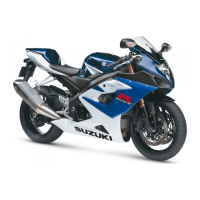
